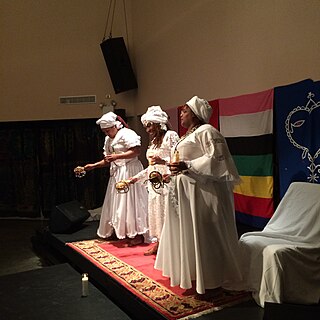Canon or Canons may refer to:
MM or variants may refer to:

A priest is a religious leader authorized to perform the sacred rituals of a religion, especially as a mediatory agent between humans and one or more deities. They also have the authority or power to administer religious rites; in particular, rites of sacrifice to, and propitiation of, a deity or deities. Their office or position is the "priesthood", a term which also may apply to such persons collectively. A priest may have the duty to hear confessions periodically, give marriage counseling, provide prenuptial counseling, give spiritual direction, teach catechism, or visit those confined indoors, such as the sick in hospitals and nursing homes.
Elizabeth or Elisabeth may refer to:
Baba and similar words may refer to:
Lunar most commonly means "of or relating to the Moon".
Godfather, God Father, or variants may refer to:
A priest is a person who holds an office in a religion, for example an Orthodox Christian priest, Roman Catholic priest, Hindu priest, an Imam in Islam, or a Kohen in Judaism.
Rev, REV or Rév may refer to:
A high priestess is a female high priest.

A manbo is a priestess in the Haitian Vodou religion. Haitian Vodou's conceptions of priesthood stem from the religious traditions of enslaved people from Dahomey, in what is today Benin. For instance, the term manbo derives from the Fon word nanbo. Like their West African counterparts, Haitian manbos are female leaders in Vodou temples who perform healing work and guide others during complex rituals. This form of female leadership is prevalent in urban centers such as Port-au-Prince. Typically, there is no hierarchy among manbos and oungans. These priestesses and priests serve as the heads of autonomous religious groups and exert their authority over the devotees or spiritual servants in their hounfo (temples).
Holy is a synonym for sacred.
Bona fide or good faith is a sincere intention to be fair, open and honest.
A high priest is a term often used to describe the leading figure in various religious organizations, particularly in antiquity.

Hiereia was the title of the female priesthood or priestesses in ancient Greek religion, being the equivalent of the male title hiereus (ἱερεύς). Ancient Greece had a number of different offices in charge of worship of gods and goddesses, and both women and men functioned as priests. While there were local variations depending on cult, the Hiereiai had many similarities across ancient Greece. Normally, their office related only to a specific sanctuary or Greek temple.
Priestess of Hathor or Prophetess of Hathor was the title of the Priestess of the goddess Hathor in the Temple of Dendera in Ancient Egypt.
A priestess is a woman authorized to perform the sacred rites and or duties of a religious organization, often used for non-Christian, pagan, and or witch-related titles, or positions. However, whilst very rare, some Christian based women also use the title. It is most commonly used to describe ancient traditions, though many Wiccan, Pagan, Druidic, and even Some Christian, women use this title as a religious title once ordained, even in the current present.
This page is based on this
Wikipedia article Text is available under the
CC BY-SA 4.0 license; additional terms may apply.
Images, videos and audio are available under their respective licenses.


